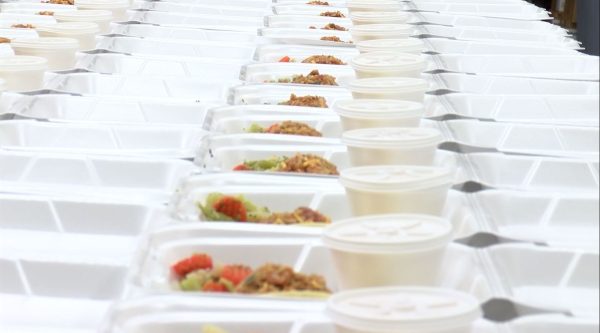HONOLULU (KHON2) — Food insecurity in Hawaiʻi reflects one of the highest costs of living in the United States.
And local families across the islands face food prices that remain well above the national average.
A new report from Feeding America’s “Map the Meal Gap 2024” analysis shows how this reality shapes hunger for keiki and adults.
Here’s what we found in the report.
Local costs of food
Researchers worked with NielsenIQ to measure the cost of food in every county using the U.S. Department of Agriculture’s Thrifty Food Plan.
In Hawaiʻi, the index shows food costs outpace most states. That means every dollar buys less food than on the continent.
The national average meal cost in 2022 was $3.99. In Hawaiʻi, the figure is higher after adjusting for the state’s food index. The analysis used meal costs from food secure households to reflect the price of an adequate diet.
Food budget shortfall
Food insecure households across the country said they needed more money to meet basic needs. On average, families reported a shortfall of $24.73 per person per week.
The study also noted that households live with food insecurity for about seven months of the year.
For Hawaiʻi, this gap is magnified. Higher grocery costs mean local families must spend even more to reach food security.
Each county in the state has its own adjusted figure based on prices and population, but all are above the national average.
Children at risk
The impact on children is especially sharp. A household is classified as food insecure if it answers yes to at least three questions about running out of food, cutting meals or going hungry.
For households with children, questions also include whether kids skipped meals, went a whole day without eating or had to rely on only a few kinds of low-cost food.
The model estimates how many children live in food insecure households. In Hawaiʻi, the share reflects the combination of high costs, poverty and unemployment.
Researchers stress that food insecurity is not daily for every family but rather occurs across many months of the year.
What the numbers show
The estimates combine poverty, unemployment, disability, homeownership, income and race and ethnicity data to calculate need at the county level. For Hawaiʻi, the data confirm what families know from lived experience.
Food costs are higher, and the gap between what households can afford and what they need is larger.
Hawaiʻi food insecurity by county, 2022
1. Maui County:
- Child food insecurity rate: 19.7% (7,560 children).
- Overall food insecurity rate: 12.4% (20,070 people).
- Annual food budget shortfall: $18,049,000.
- Cost per meal: $5.71.
2. Hawaiʻi County:
- Child food insecurity rate: 19.0% (8,360 children).
- Overall food insecurity rate: 12.1% (26,680 people).
- Annual food budget shortfall: $19,622,000.
- Cost per meal: $5.36.
3. Kauaʻi County:
- Child food insecurity rate: 18.4% (2,940 children).
- Overall food insecurity rate: 11.7% (8,620 people).
- Annual food budget shortfall: $6,439,000.
- Cost per meal: $5.14.
4. Kalawao County:
- Child food insecurity rate: 17.1% (0 children reported).
- Overall food insecurity rate: 11.3% (50 people).
- Annual food budget shortfall: $41,000.
- Cost per meal: $5.71.
5. Honolulu County:
- Child food insecurity rate: 14.3% (29,610 children).
- Overall food insecurity rate: 9.7% (101,740 people).
- Annual food budget shortfall: $74,684,000.
- Cost per meal: $5.43.
While food insecurity in the islands reflects national trends, the cost-of-food index makes clear that Hawaiʻi families face a greater challenge.
You can click here to access the full report.
The study underscores how economic pressure and food prices combine to shape hunger in the state.
